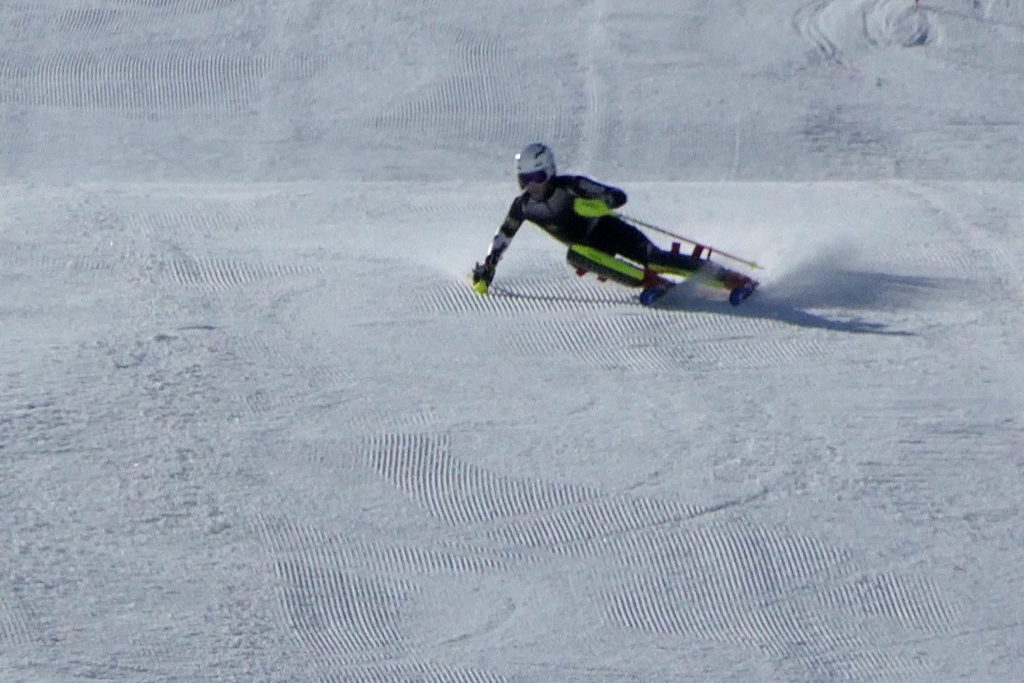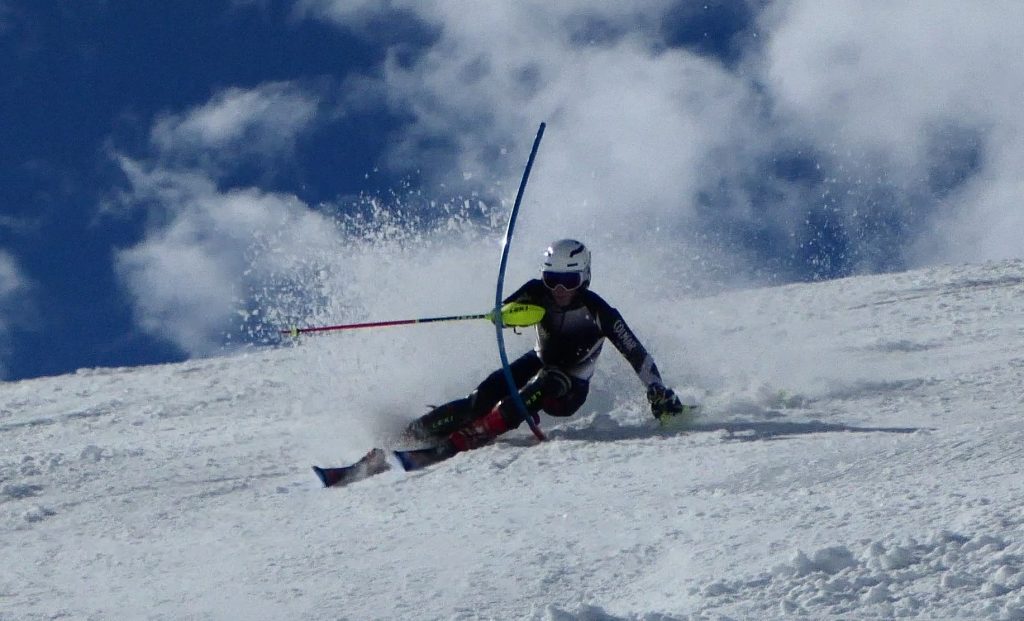In any one off session you can’t really be assured of getting very far – but you can transmit a lot of information and the general direction that people need to work towards.
Simon: Very good pivot and dynamics – complete lack of angulation (See “Angulation” below!)
Ariela: Keep working on the dynamics and the plough will disappear by itself.
Skating
Skating was used to introduce dynamics (disequilibrium) and the cultivate independent leg action. Skiing is really just skating – using gravity – and we can do this on flat terrain. It’s all about moving your Centre of Mass.
Dynamics
Dynamics and the exercises we used are covered at the following linked page “Dynamics“. Focus on the extension of the outside leg – early – for initiating the turn – coming down with the centre of mass (not up!). Feel the commitment to pushing with that leg! (Magic invisible wall!)

Foot Forward Technique (Text copied from yesterday’s blog entry)
The ski turns you because as you “fall over” the ski cuts under the trajectory of your centre of mass and lifts you back up – the result being a turn. Bicycles work exactly the same way. Pushing the support foot forward from start to end of the turn speeds up the “under cutting” and so tightens up the turn radius. We used a static exercise with the skis off to develop the correct feeling. This video below from ice hockey training displays the same mechanics of movement. The goal was to tighten the turns. Everyone should benefit from this – it’s how turn radius is altered when using dynamics.
Pivoting
There is detailed explanation of pivoting at the following page link: “Pivot” Learn to separate the edge of the foot from the edge of the ski! Use the Centre of Mass and pole support.
When pivoting the ski is swinging laterally into the turn – following the movement of the centre of mass…
Angulation
More information at “ChiSkiing“
Simon – look at your skiing video again and see how there is no angle at the hip in comparison with the image below.

Alignment
Simon – your ski boots are not flat on the soles of the feet when the legs are held straight out – hip width apart (strongest position). The boots are “over edged” – which is unusual. In your case this causes your feet to come very close together and the knees to sometimes bow outwards and is probably why you do not use angulation. What you can do is insert wedges between the inner and shell at the boot cuff (outside face of each leg) – which will level the sole of the boot. In future boots with an adjustable cuff are more advised and also higher level boots with stiffer flex – around 120 DIN. Basically – soft boots are junk because you can’t develop proper dynamics as they will not support forward pressure. Alex the racer above weighs 62kg and uses either 130 or 150 DIN – whereas the boots you are using will be around 90 and have no compensation adjustment for morphology.

